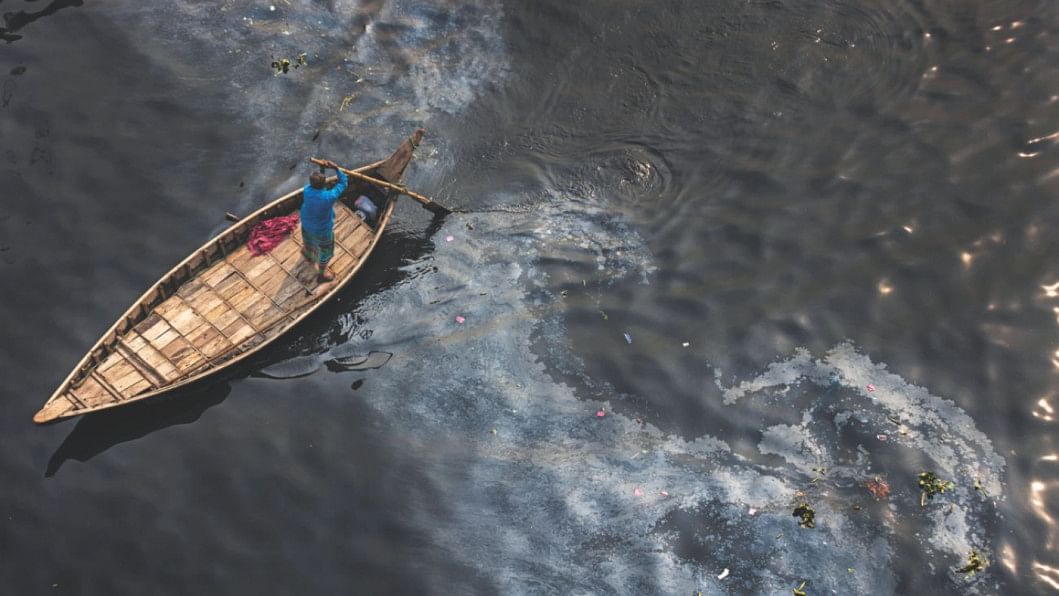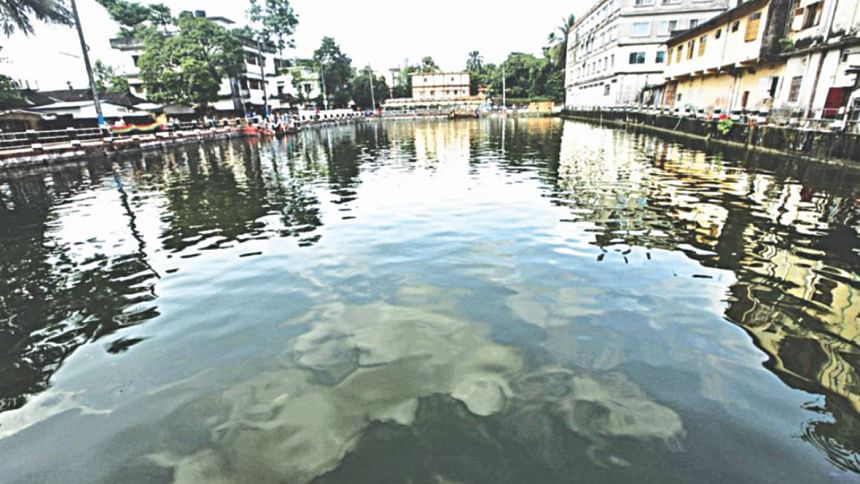Our wetlands and a sustainable urban future

Bangladesh is one of the fastest growing urbanising countries of the world. By 2025, 50 percent of Bangladesh is supposed to be urbanised. Cities are growing rapidly. By 2050 the number of city dwellers is supposed to increase by 66 percent (from 4 billion in 2016 to 6.3 billion in 2050).
As demand for land increases, the tendency to encroach on wetlands is also on the rise. Filling up of ponds, wetlands, rivers, khals and depressions, cross bunds across rivers, and drying up of wetlands disrupt natural water settings; dumping rubbish on wetlands degrades natural green spaces enhancing pollution and dying of rivers.
Wetlands are the most useful natural productive ecosystem in the world. Estimates indicate that about 6.4 percent of land in the world are wetlands. Varieties of species of microbes, plants, insects, amphibians, reptiles, birds, fish and mammals are part of a wetland ecosystem. The complex, dynamic relationships among those organisms in a wetland environment create unique food webs. They vary in America, Europe, Africa and Asia and differ from one another playing an integral role in the ecology of watersheds. Species of birds and mammals rely on these food cycles for food, water and shelter, especially during migration and breeding. Thus they become part of a global cycle for water, nitrogen and sulphur.
Wetlands are the storehouses of carbon within plants and soil and carbon dioxide is not released to the atmosphere as a result. Wetlands help to moderate global climate change. They are natural water purifiers; improve water quality; protect from floods; control shoreline erosion; exude natural beauty; and create opportunities for recreation at no cost. By protecting our wetlands, we actually protect ourselves. Wetlands are the “kidneys of the landscape”, rechargers of aquifers giving “purified” water for safe drinking.
Bangladesh is highly rich in wetlands. Aerial photographs show rivers and streams, freshwater lakes and marshes, haors, baors, beels, jheels, lakes, ponds, water storage reservoirs, floodplains, flooded cultivated paddy fields and estuarine and mangrove system. They are considered as “biological supermarkets.” We have about seven to eight million hectares of wetland as permanent rivers and streams (480,000 hectares), estuarine and mangrove swamps (610,000 hectares), shallow lakes and marshes (120 000–290 000 hectares), large reservoirs (90,000 hectares), small ponds and tanks (150 000–180 000 hectares), shrimp ponds (90000–115000 hectares) and seasonally flooded floodplains (5,770,000 hectares).
Millions of human-made ponds, tanks and khals, in the end, also turn into natural wetlands and serve us without any rest. We have a deep emotional attachment with these wetlands: “Bhate mache Bangali” being an example. The lives of our rural community are inseparable from these wetlands and resources; they get their nutrition from small fish captures, aquatic plants and rice straws and many other types of greenery. The Tanguar haor and the Sundarbans are two world heritage sites where wetlands are a central attraction.
Haors are bowl-shaped depressions mostly found in the north-east region; and monsoon flooding is the cause behind their creation. Total haor area is about 24,500 sq km. There are about 411 haors covering an area of about 8000km over the districts of Sunamganj, Sylhet, Moulvibazar, Habiganj, Netrokona and Kishoreganj.
Beels are large surface water bodies that accumulate rainfall runoff water in depressions forming wetland bearing local characters and are found all over Bangladesh. Beels are essential parts of active floodplains of the Surma-Meghna, the Brahmaputra-Jamuna, and the Ganges-Padma river systems varying in size and shape.

Baors are oxbow lakes formed from the morphologically effluent dead arms of rivers. Oxbow lakes are quite visible in the older floodplains of the western part of the country. Oxbow lakes act as local water reservoirs, and help to control local flood level. The haors, baors, beels and jheels all together play a unique role for the environment, ecology, economy and livelihood of local people in the country.
Wetlands make significant contributions to the economy, society, and ecology of the country. Fish production in wetlands contributes substantially to national income. The fishery sector provides full-time job opportunities to over 1.2 million people. About eight percent of the total population of the country depend on the fishery sector for livelihood. These wetlands provide a habitat for many aquatic animals which are economically valuable. Haors, baors, and beels support 60 types of fish species and at least 75 species of vegetation, which is nearly half of the national total of 158 species of vegetation. Wetland values were estimated in Hail Haor in 2000 and came to be USD 650 per hectare—almost double that of the net return of single crop rice cultivation.
However, wetlands of Bangladesh as well as of other countries face serious threats. Almost 40 percent of our rivers are already dead or lost. Wetlands are under attack in various ways: encroachment, urbanisation, flash floods, siltation and sedimentation, river bank erosion and wave action, reduction of navigability, scarcity of drinking water, fragile and inappropriate road network, degradation of ecosystem, indiscriminate harvest of natural resources, over-exploitation of fisheries resources and swamp forest, weakness in leasing system for fisheries, inadequate community management, inadequate operation and maintenance of existing infrastructures, etc. Over the past 250 years or so, 53 percent of wetlands in the US have been lost due to human activities. Wetlands are declining and more than 64 percent of the world's wetlands have been lost between 1900 and 2008.

Dhaka City, the fastest growing urban city of Bangladesh, has already lost 66 sq km of marshy and peaty inundated low-lying areas—it went from 133 sq km in 1968 to 67 sq km in 2001. Similarly, inland lakes of 3.3 sq km have been encroached upon—it went from 5.1 sq km in 1968 to 1.8 sq km in 2001. More than 50 percent of wetland areas have been reduced over the period of 1968 to 2001.
Bangladesh has been very active to preserve wetlands by adopting policies, strategies and action plans. Bangladesh Haor and Wetland Development Board is responsible for management and regulation of wetlands and haors in Bangladesh. The Department of Bangladesh Haor and Wetlands Development has also been established. Environment Court Act 2010; Environment Conservation Act 1995; Water Act 2013; National Environment Policy (1992); National Water Policy (1999); National Fisheries Strategy and Inland Capture Fisheries Strategy (2006); Jalmohal Management Policy (2009), etc., are some examples of government efforts. Various projects have been taken up for the sustainable management of wetlands. Fish sanctuaries have been introduced and community-based fishery management has been implemented in Sunamganj haor areas.
We need to retain, restore and preserve our wetlands. Land use planning in urban areas needs to be taken into consideration along with involvement of local residents in wetland management, preservation and restoration of urban wetlands, and reduction of water consumption and harmful runoff.
World Wetlands Day is celebrated every year on February 2 to raise global awareness about the value of wetlands for humanity and the planet. It also marks the date of adoption of the Ramsar Convention on Wetlands in 1971, in the Iranian city of Ramsar. World Wetlands Day was celebrated for the first time in 1997.
Wetlands for a Sustainable Urban Future was the theme for the World Wetlands Day this year. Urban wetlands make cities liveable in many ways. They reduce flooding, replenish drinking water, filter waste, provide urban green spaces, and provide sources of livelihoods. These wetlands are now crucial as the number of people living in cities has passed four billion and will continue to rise. By 2050, 66 percent of world population will live in cities seeking better livelihoods. Unfortunately, most of us are unaware of the value and importance of urban wetlands. Wetlands are often viewed as wastelands. World Wetlands Day 2018 aims to raise awareness about how urban wetlands contribute to the future of sustainable cities. Urban wetlands should be integrated into a city's sustainable future planning and development; not viewed as wastelands. Cities should adopt policies and actions which help conserve and promote urban wetlands.
Wetlands are a precious national resource. The economic value of wetlands simply cannot be calculated. Our spirit, mind, body and health are related to wetlands. We need to save our wetlands—both in the rural and urban areas.
Dr Sujit Kumar Bala is Professor and Director, Institute of Water and Flood Management (IWFM), Buet.





Comments